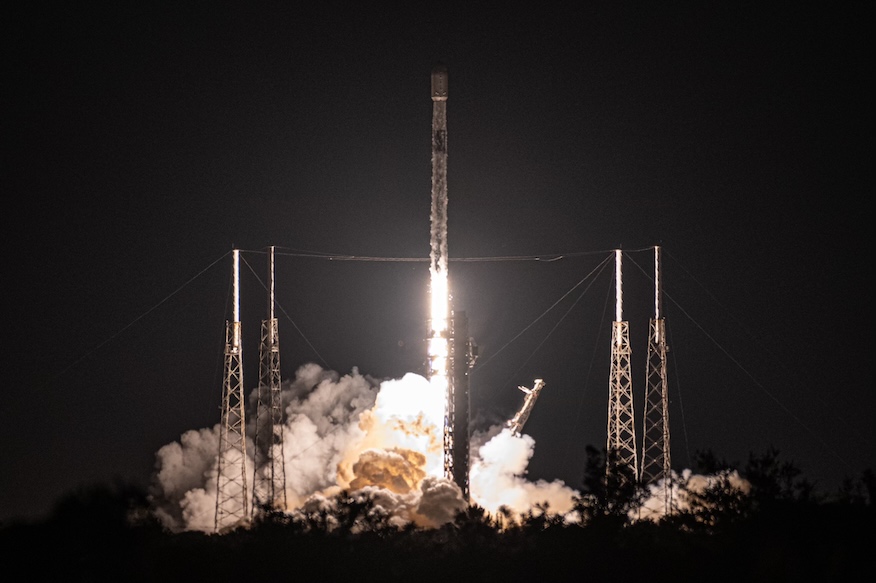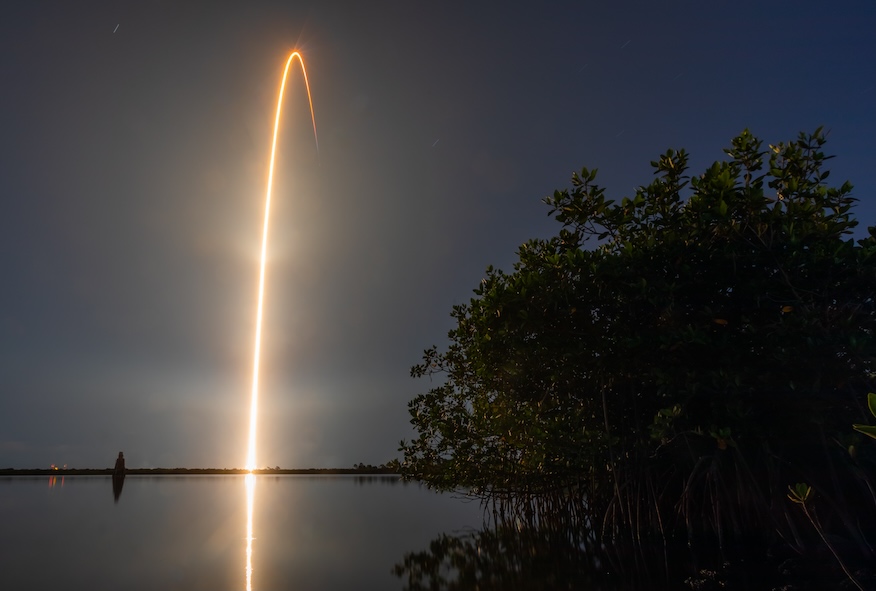SpaceX launched a batch of 23 Starlink satellites on its Falcon 9 rocket from the Cape Canaveral Space Force Station. The mission brings the total number of Starlink satellites in orbit to 5,999, according to numbers released Sunday by orbital tracking expert and astronomer Jonathan McDowell. He noted that one of the satellites, cataloged as S-2601, had re-entered the atmosphere earlier in the day.
Liftoff of the Starlink 6-58 mission from Space Launch Complex 40 occurred at 20:53 EDT (0053 UTC). This was SpaceX’s 34th special Starlink launch of 2024.
The first Falcon 9 booster stage supporting this mission, B1073 in the SpaceX fleet, made its 15th flight. Among its previous missions, B1073 launched ispace’s HAKUTO-R lunar lander, SpaceX’s 27th Commercial Resupply Services (CRS-27) mission, and the Bandwagon-1 shared flight.
Just over eight minutes after liftoff, B1073 landed on the SpaceX drone ship, “A Shortfall of Gravitas.” It was the 69th booster landing for ASOG and the 307th booster landing for SpaceX to date.

The mission came amid a weekend of historic solar activity that brought auroras as far south as Florida. On Friday, the National Oceanic and Atmospheric Administration (NOAA) noted that at least five coronal mass ejections have been observed by NOAA’s Space Weather Prediction Center so far.
As of Sunday morning, the SWPC said a “G4 or Greater Watch” remained in effect for May 12, noting the possibility of a “severe to extreme geomagnetic storm is possible again later today.”
In a post on his social media site, X (formerly known as Twitter), Elon Musk said SpaceX is closely monitoring the impact of solar storms on the Starlink constellation.
A major geomagnetic solar storm is happening right now. The biggest in a long time. The Starlink satellites are under a lot of pressure, but so far they are holding up. pic.twitter.com/TrEv5Acli2
— Elon Musk (@elonmusk) May 11, 2024
Fourth starship flight
The Florida launch activity also comes as SpaceX nears the fourth integrated flight test of its Starship rocket in south Texas. The Super Heavy Booster (Booster 11) is currently on the orbital launch pad (OLM), and the upper stage of craft 29 was set for alignment on Sunday afternoon.
Musk said in a separate post that he expects IFT-4 to be “probably three to five weeks away,” which would put the mission sometime in the first half of June.
While the company awaits Federal Aviation Administration (FAA) approval for the next Starship launch, the FAA also released information noting that it will conduct an environmental review of Starship launches at Launch Complex 39A (LC-39A) at NASA’s Kennedy Space Center.
Two in-person scoping meetings are scheduled for June 12 and 13 in Cape Canaveral and Merritt Island, respectively, to allow the public to weigh in on the proposal. The virtual meeting is scheduled for June 17.
Although the final environmental assessment for Starship was completed in September 2019, the FAA stated that “SpaceX has not submitted a vehicle operator license application for Starship-Super Heavy launch operations in the LC-39A following the completion of 2019 EA; therefore, the FAA has not taken federal action to accept NASA’s EA/FONSI (a finding of no significant impact).”
The agency said SpaceX is now proposing new launch infrastructure that is not part of the 2019 EA and aims to launch up to 44 launches per year. SpaceX will also land the Super Heavy booster and Starship on the LC-39A or drone for reusable missions or jettison them into the ocean for expendable missions.
Super Heavy Booster for Flight 4 that moves to the pad at the Starbase pic.twitter.com/jtDIvIXhOr
— SpaceX (@SpaceX) May 11, 2024



